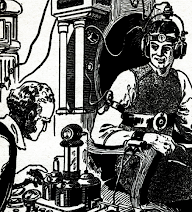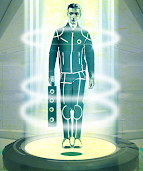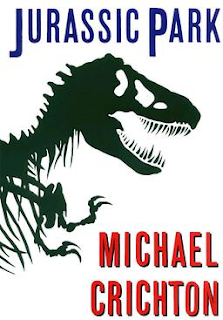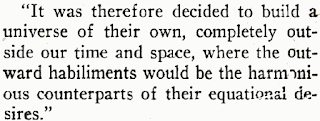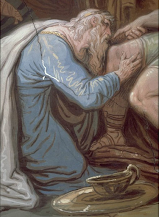1952-2022. In the August 1952 issue of Startling Stories there was a letter from Philip Farmer in which he critically commented on several science fiction stories. Apparently, Farmer had been a fan of science fiction for about 25 years when his first published science fiction story was described by editor Samuel Mines as constituting "a fresh note in science fiction". In his editorial comments at the start of that issue, Mines lamented the fact that many science fiction story tellers were "stuck in a rut" and that the entire genre needed to move beyond mere gadget stories.
Here are three of the most dreaded plot elements in science fiction stories: 1) Earthlings at war with invading Martians from Mars, 2) the SuperGenius™ inventor who makes a scientific discovery that nobody else can duplicate and 3) a story whose outcome hinges on the magical powers of hypnosis. Maybe when Philip José Farmer began publishing science fiction stories in 1952, he imagined that he needed to cram many such stale plot elements into a story in order to increase the odds that it would get published. While playing that game, how could Farmer escape from the past and find his own voice as a writer? Let's find out...
Here in this blog post I'll discuss two of Farmer's earliest stories, "The Lovers" (1952) and "The Biological Revolt" (1953); these stories feature viruses and for that reason they make good reading during a pandemic. Both of these stories involve large amounts of fantasy biology, but Farmer graduated with a degree in English (1950). According to the blurb shown to the left on this page, Farmer did have interests in science and his wife apparently provided him with sciensy stuff to include in his stories. According to this timeline, he discovered science fiction at about the same time (1928) as Isaac Asimov. However, Farmer's first published story (1946), "O'Brien and Obrenov" was not a science fiction story.
Having Fun. Back in 2015, I fantasized that in an alternate Reality, it may have been possible for Farmer and Asimov to write some science fiction stories collaboratively. Farmer was a master at linking both real world people and the fictional characters devised by other authors into his science fiction stories. I was impressed when I discovered his River World stories, which created the opportunity for Farmer to include in his story any human from all of human history. What fun! For my own stories such as The Historical Archive, I use imaginary Reality simulation technology to allow me to include historical figures like Empedocles in my stories.
Apparently, "The Biological Revolt" was a story title invented by editor Hugo Gernsback, who made so many changes to this story that Farmer felt the published version was ruined.
The interior artwork for the story by Frank R. Paul is amusing. The chess-playing creature who smokes through his trunk (image to the right) is a Priami who lives on Mars, but the Priami came to our Solar System from a distant exoplanet.
No Martians for you! Not only did Farmer avoid writing a story about aliens who had evolved on Mars ✅, he also avoided a mundane science fiction plot involving an alien invasion. The Priami have an ancient and stable culture that does not involve mindless militarism. Instead, Farmer depicted we humans as the crazed warriors ✅ in "The Lovers".
Some of the stories appearing in Gernsback's new science fiction magazine, Science-Fiction Plus, provide good examples of what Samuel Mines was probably thinking of when he wrote about "gadget stories" and science fiction writers who were "stuck in a rut".
In particular, the first issue of Science-Fiction Plus magazine included two stories by Hugo Gernsback. "The Cosmatomic Flyer" is a pure gadget story and the only good thing about it is that it is mercifully short. The story was set in 1968 and it described the first application of the "cosmic-atomic reaction engine", which releases vast quantities of atomic energy without producing any nasty radiation. The authors of many early science fiction stories were in search of a way to efficiently use atomic energy to power their spacecraft.
The most interesting thing about "The Cosmatomic Flyer" is that is was crafted so as to look like a news story published in the
New York News Times. Gernsback used the same font for the imaginary
News Times as was used for
The New York Times.
Name Games. In Gernsback's story, the secret to atomic-powered flight is discovered by the famed professor Lementeur. The other physicist in "The Cosmatomic Flyer", who flies from New York to Philadelphia and back in 20 minutes, may have been named after Cyril M. Harris who worked in the Bell Labs physics laboratory where the transistor was invented.
I have to wonder if Farmer was influenced by the kinds of name games that were played by Gernsback.
The Gernsback story "Exploration of Mars" was first published in
1949. The story's illustration of a Martian (image to the right) has some anatomical features that are similar to the alien
Priami in "The Biological Revolt". The idea of a Martian with a trunk might go back to 1934 and the 18-inch-long cross between a beak and a trunk imagined by
Weinbaum for his story "
A Martian Odyssey".
 |
Banshuck's gravitator-propelled spaceship
|
Non-radioactive radiation. For "Exploration of Mars", Gernsback imagined a highly-efficient atom-negative gravitator, invented by the "
intrepid explorer" Grego Banshuck and built into the hull of a titanium
submarine spaceship as part of a secret military R&D program in the 1940s. In case you have ever doubted the existence of canals on Mars, look at the image to the left!
 |
advanced Martian medical imaging
|
Transmutation. As described in "Exploration of Mars", the telepathic Martians have been visiting Earth for over 500,000,000 years, but they find Earth and Earthlings of little interest. The Martian's continually produce vast amounts of water by transmuting sand into water and then the water is distributed via their canal system to plantations where plants produce oxygen. Water is kept flowing through the canals by atomo-electronic degravitators. "Exploration of Mars" is 12 pages packed full of descriptions of HiTek™ gadgets used by the technologically advanced Martians.
 |
| teleportation |
Fantasy technology. The events depicted in "The Biological Revolt" all take place on Earth, but in these future times, teleportation can be used to travel from place to place, even between planets. Teleportation technology is central to "The Biological Revolt", so to a first approximation this is a gadget story and we can guess why Gernsback published it in his magazine.
Fantasy biology. Bill Ogtate is the most important person in the Solar System. He alone knows the secret of the Belos. However, Bill is quite sick. His wife wants nothing to do with him because his body is infested with the asp. Or the Asp. Or the Anti-Social Perfume. Readers must slog through many pages of the story before Farmer gets around to "explaining" what is going on. Bill's body is host to a "semivirus": the asp is a giant protein molecule which reproduces continually and is shed from Bill's body.
 |
run skunk, run
|
Highly Contrived. Upon entering the body of another animal (humans, frogs and mosquitoes are all effected) the
asp proteins activate the adrenal medulla and the brain, causing fast heart rate, an aversive reaction and fear. Even skunks run away from Bill.
Farmer carefully "explains" that casual exposure to asp proteins only induces fear in other people. Bill is different because the asp was injected into his blood and now he's infected for 10 years. Farmer's idea of a replicating virus composed only of protein was dead wrong, but we can forgive Farmer because it was only in 1953 that the structure of DNA was discovered and the last nails were being driven into the coffin of the idea that proteins could function as genetic molecules.
 |
Figure 1. the comprob
|
Don't bother trying to understand Farmer's fantasy biology and how the
asp can reach the adrenal glands of other people without getting into their blood because none of this fantasy biology makes any sense. Still, how many English majors in 1953 even knew what a protein was? I give Farmer credit for
trying to play the science fiction game ✅, even if "The Biological Revolt" reads like some lame political thriller that he wrote in the 1940s and then later gussied up with Sci Fi jargon in order to get it published.
Fantasy sociology. In this future society of Earth, it is against the law to interfere with anyone's free will. However, poor Bill was infected with the asp in order to pressure him into revealing the secret of the Belos. Political necessity (the threat of interplanetary war) trumps the rule of law.
Predicting the future. In case teleporters are not enough futuristic technology to satisfy your gadget craving, "The Biological Revolt" also features New Delphi,
The Computer of Probabilities. There is the HiTek™ comprob in
Figure 1, above and to the left, a giant computer that can predict exactly what psychological pressures need to be exerted on Bill in order to make him crack and give up the secret of the
Belos.
Hypnotism. But care must be taken! Readers are told that the secret of the
Belos exists as equations in Bill's mind, and any attempt to force him to reveal the
Belos will run afoul of a "post-hypnotic block".
War. Earth is at war with Mars. This is a battle for territory. "This Solar System isn't big enough for both of us!" The alien Priami have taken control of half the Solar System. The only way to win the war is to deploy a device (the Belos) that will prevent the enemy from using teleportation.
Divorce. After two years of Bill being ostracized because of the
asp, his wife finally decides to divorce him. This mention of divorce is the 1950s "code signal" that allows Bill to "safely" take up with another woman.
I wonder if Gernsback inserted the brief discussion of Bill's divorce into the story until I read "The Lovers" (see below) and saw how Farmer had also inserted discussion of the protagonist's divorce into that story. In the end, it was Asimov who went through a divorce, not Farmer.
 |
medical magic
|
It is a small Solar System. The Comprob searches through the Solar System and finds Miss Killison, the one woman who has a greater than 50-50 chance of getting Bill to surrender the secret of the
Belos.
Coincidence #1: Miss Killison's first name is Barbara, the same as Bill's wife.
Coincidence #2: Miss Killison is Major Killison and she has recently said she'd be willing to marry General Yewliss of the Terran Psychology Corps, the man in charge of
Project Asp, the government/military effort to learn the secret of the
Belos from Bill.
Coincidence #3: Miss Killison is Doctor Killison, one of the people who developed the
asp.
Mr. Smith goes to Mississippi. Bill lives on an island in the middle of the Mississippi river. His one remaining friend is 'Smith' (his real name is Ixtrungszb), a Priami from Mars. And yes, the entire focus of the Earth's government for the past two years has been Bill, but they don't know that a Priami hangs out with Bill. When Miss Killison arrives on the island, 'Smith' quietly slips into the basement.
Then, in just a few hours, Dr. Killison cures Bill of the
asp and becomes Bill's lover. Trying to prevent an interplanetary war, Bill gives the secret of the
Belos to the
Priami and Earth's on-going research efforts independently solve the secret of the
Belos. The whole ending of the story seems rushed and I suspect that when Gernsback reached his page limit for that issue of the magazine, he simply truncated the ending of Farmer's story.
 |
the thrilling conclusion
|
Virology 101. The miracle cure for the asp that is discovered by Dr. Killison is made possible by the fact that the meddling General Yewliss has been secretly feeding pyretigen to Bill. Pyretigen is another semivirus that normally would quickly be eliminated from Bill's body after causing a fever. Coincidence #4: the asp semivirus is replicating the pyretigen.
Only after realizing that Yewliss has a fever because of the pyretigen does Dr. Killison try giving Bill a "recently developed anti-virus" drug. Within just a few more hours, Bill is
asp-free.
I wonder if Theodore Sturgeon's 1953 science fiction story, "The Wages of Synergy" was inspired by "The Biological Revolt".
I also have to wonder what Farmer's original title was for the story. I suspect that Gernsback deleted parts of Farmer's original story, so maybe there was a "revolt" in there, originally. However, Farmer seems to have been enamored of the "semivirus" so my guess is that the original title somehow linked virology and politics. "The 18 wheel Semivirus" would have been amusing, but I suspect that Farmer's title was darker, such as "The Viral Zek".
 |
Figure 2.
|
One odd bit of text that avoided Gernsback's editorial adjustments to the story and remained for we readers was the strange festival of name-dropping shown in
Figure 2. These are the words of Dr. Killison (when she's between puffs of her cigarette) and they suggest a strong compulsion in Farmer to bring historical figures into the story.
Politics. Even with the teleportation technology and the all the fantasy biology, the central theme in "The Biological Revolt" is not really a technology issue. The story is driven by political machinations. I generally despise fictional politics, but Farmer did not go too far afield. Nobody in the story is depicted as evil. The conflict between the
Priami and humans arises from distrust. The ending of the story is rather ambiguous and I like to imagine that Farmer's original ending might have involved Dr. Killison and Bill going to Mars with "Mr. Smith', the alien. Nobody wants to be deprived of teleportation technology by the
Belos technology, so it is clearly time for humans and the
Priami to talk, cooperate and not fight a war.
 |
fake woman of Ozagen
|
Journey to Oz(again). Apparently, "The Lovers" was rejected by several of the leading science fiction magazines of the early 1950s before being published in
Startling Stories. According to Asimov, John Campbell disliked stories that depicted humans as being inferior to aliens, so Farmer's theme in "The Lovers" of aliens tricking humans was not likely to get into
Astounding. The events in "The Lovers" take place on the distant (1,000 light-years from Earth) planet Ozagen.
"The Lovers" is told from the perspective of humans who are intent on colonizing the planet Ozagen. These colonials are from Earth's Haijac Union, which is controlled by religious fanatics who we readers must learn about in drips and dribbles as the story unfolds. One of the titular lovers is Hal Shamshiel Yarrow, one of the colonizers; a scientist. I've never read the later expanded novel version of "The Lovers" which apparently identifies Yarrow as a linguist.
Most of the people on Ozagen are called 'wogglebugs' (wogs) by the colonizers. However, the colonizers are intrigued by the ruins of a civilization that once existed on Ozagen. Readers are told that unlike the insectoid wogs, the lost civilization had mammal-like humanoids (defeated in a war against the wogs 500 years previously). Yarrow jumps in a wog jeep and heads out into the jungle to inspect the ruins of that lost civilization.
A cigar is just a cigar. Readers are quickly dazzled by Farmer's world building: he includes little details like the name of the brand of cigarettes that is being smoked in each scene. Maybe this was how pulp magazines stayed in business in the 1950s, by taking money from the tobacco industry and making sure that every story featured cigarette-smoking characters. The story includes keen psychological insights such as how much one's image can be damaged by a man letting another man light his cigarette.
More world building and continuity. And I should not allow anyone to assume that it is a trivial matter to jump into a wog jeep. To illustrate how technologically primitive the wogs are, Farmer tells us that this is the only wog jeep on all of Ozagen. Then after explaining that to readers, Yarrow wonders: Why don't the wogs put doors on their jeeps? The whole story set-up is like the Star Trek episode "Errand of Mercy" so when Farmer casually mentions that the wogs have antennae, that's the time to suspect that the wogs have secret telepathic abilities.
 |
| Fogo |
Zugu, Wong and Fogo. Zugu is the genius wog inventor who built the jeep. The jeep gets about a mile into the jungle and then breaks down and needs to be repaired. Alcohol is involved. You might wonder why the super-sophisticate colonizers don't provide more reliable transportation, but the answer is... plot. Had they inspected the humanoid ruins with a cool Haijac Union aircar, then they never would have bumped into Yarrow's alien girlfriend, Jeannette. Along for the ride into the jungle are Fogo (another wog, identified as an 'empathist') and Wong Af Pornsen. Pornsen is Yarrow's
Guardian
Angel
Pro
Tempore (gapt, for short). A gapt, functioning like the thought police, can always threaten his ward with the
Elohimeter, a kind of HiTek™ lie detector. Scientists are not trusted by the ruling Hierarchy, so Yarrow is shadowed by Pornsen.
Type-setting. We know that the poor type-setter for Startling Stories must have put some effort in "The Lovers" because the story was larded up with French. I suppose Farmer took French classes in school and could not waste his knowledge of French. Readers are told that while with the wogs, Hal and Wong are supposed to speak only French, not English... the plot thickens. However, the story has annoying type-setting errors such as the word "no" being transformed into "on", "nymph" becomes "nympth", 'Jeannette' is occasionally 'Jeanette' and "Hal" is sometimes "Hall"....
The meet cute. While driving deeper into the jungle, the jeep crashes into an antelope-like wild animal and Yarrow ends up in the bushes, face-to-face with Jeannette. Fogo, the empathist, bursts into tears when the animal dies.
Nothing can stop the Lovers. After spending 15 pages explaining to readers that Yarrow must be watched at all times by Pornsen, suddenly Yarrow is not watched by anyone and he moves into an apartment with Jeannette.
Golly, Mr. Science. How can this be? Science! The clever Yarrow has figured out how to defeat the lie detector tests that the ruling Hierarchy uses to detect sinners and other disloyal subjects. Yarrow found that an infection with the virus that causes the Sirian Rash will block the truth drug (hypno-lipno) that is used in conjunction with the Elohimeter. As in "The Biological Revolt" (above), a virus saves the day!
 |
the Haijac inquisition's Hierarchy
|
My favorite line from the story: "
You're so intelligent." That's Jeannette's comment to Yarrow after he explains how he got out from under the thumb of the watchful Pornsen. Having passed the test of the Elohimeter, Yarrow is now free to live on Ozagen with Jeannette and without the the supervision of a gapt. Let the sex begin! Well... not quite. Because he was raised in a repressed society, Yarrow is ashamed to discover how sexually aroused Jeannette can get him.
And Time Travel, too. Part of the Haijac Fictional Universe is that the Founder of the Haijac religion is rumored to travel through time. Yarrow cleverly tells his inquisitors that he has had a vision of the future: the Founder will visit Ozagen in one year. This lie will allow Yarrow a year to be with Jeannette as the Hierarchy awaits the arrival of the Founder.
Trouble in River City. Under the Haijac religion, drinking alcohol is forbidden, however Jeannette is an alcoholic. Soon enough, Yarrow is visiting a wog tavern to get alcohol for Jeannette.
Semivirus. In "The Biological Revolt" there were two semiviruses and for "The Lovers", readers learn that the Haijac plans for taking control of Ozagen include creating a new semivirus that can be used as a biological weapon against the wogs. 24 pages into "The Lovers", readers are casually informed that most of Earth's population was once wiped-out by biological warfare.
It was not until 1975 that the
Biological Weapons Convention went into effect. I have to congratulate ✅ Farmer for making a story featuring biological warfare rather than the typical atomic war that is found in many 1950s science fiction stories.
The secret backstory. Yarrow asks Fodo for help in curing Jeannette's dependency on alcohol, but Fodo mistakenly believes that Hal is trying to cure his own alcoholism. Like many other parts of "The Lovers", Fodo's confusion makes no sense because he has mind-reading abilities and knows everything about the invading Earthmen except that Hal is living with Jeannette.
The wog cure for alcoholism is another liquid that can be secretly given as a replacement for alcohol. It isn't until much later that Fodo (and readers) realize that Hal has been living with an alien lalitha, a creature that can mimic the human female body form.
One Sex. All the lalitha are females. Like the wogs, the lalitha can sense the thoughts of others and manipulate the behavior of their lovers. Through the long haul of evolution, the lalitha lived among the mammal-like humanoids of Ozagen. After the war with the wogs, the remnants of the lalitha were able to live with some French colonists from Earth, which was why Jeannette spoke a strange version of French when she met Hal.
Telepathy. The wogs have used their telepathic mind-reading ability ever since the Haijac colonists arrived. The wogs tricked the Haijac and the semivirus that was developed to exterminate the wogs is useless. The wogs take over the Haijac colonist's spaceship using a swarm of insects that they can telepathically control.
 |
Figure 3. Photonics, from "The Lovers"
|
Alcohol. Alcohol prevents the lalitha from becoming fertile. When Yarrow secretly weened Jeannette off of alcohol, she became pregnant.
Photonic Genes. The pregnant lalitha produces a batch of eggs and then dies. The lalitha nervous system is such that it captures images of a lover and imprints his phenotype on the offspring (see
Figure 3, above). Sadly, Farmer provided no details on how the activity of a lalitha's nervous system could re-program chromosomes. At the end of the story, Yarrow finds himself the father of a clutch of little baby lalitha who look just like him, but sexier.
The Star Kings. I have to wonder to what extent Jack Vance's alien 'Star Kings' were a reaction against the fantasy biology of "The Lovers". In Vance's novel, he mocked the kind of "convergent evolution" featured by Farmer in "The Lovers". Farmer's Lamarkian system for imprinting a new phenotype on the offspring of lalitha was probably too absurd to warrant a response.
Sadly, in the early 1950s, Farmer was writing just before molecular genetics became a thriving science. Also, Farmer could not have guessed the form that genetic engineering would take in the future. Farmer was also writing right at the start of the era of transistors and microelectronics. It would be an interesting exercise to re-write "The Lovers" so as to include an alien species that could use nanotechnology to make possible the kind of reproductive life-style that Farmer imagined for the lalitha.
The nerve! I like the idea of inventing imaginary hormones that could be produced by reproductive organs. For the Exode Saga, I imagine hormones like oxypathin and clytykinin. I also like the idea of linking the nervous systems of parents to the nervous systems of offspring, as featured in The Historical Archive.
Sadly, Farmer provided no details for how he imagined the "mind-reading" of the wogs and lalitha might work. He could go no further than Isaac Asimov did with a bit of hand-waving about detecting electrical signals from brains.
I have a bad habit of imagining how science fiction stories might have taken on alternate forms in other Realities. It would be interesting to re-write Farmer's story about photonic genetics so as to include technology-assisted telepathy and endosymbionts. I guess I should count myself as lucky that Farmer was able to collaborate with his wife and add some imaginary science to his stories. Just think what might have come from a story writing collaboration between Asimov and Farmer!
Related Reading: fantasy teleportation.
Next: life after death



